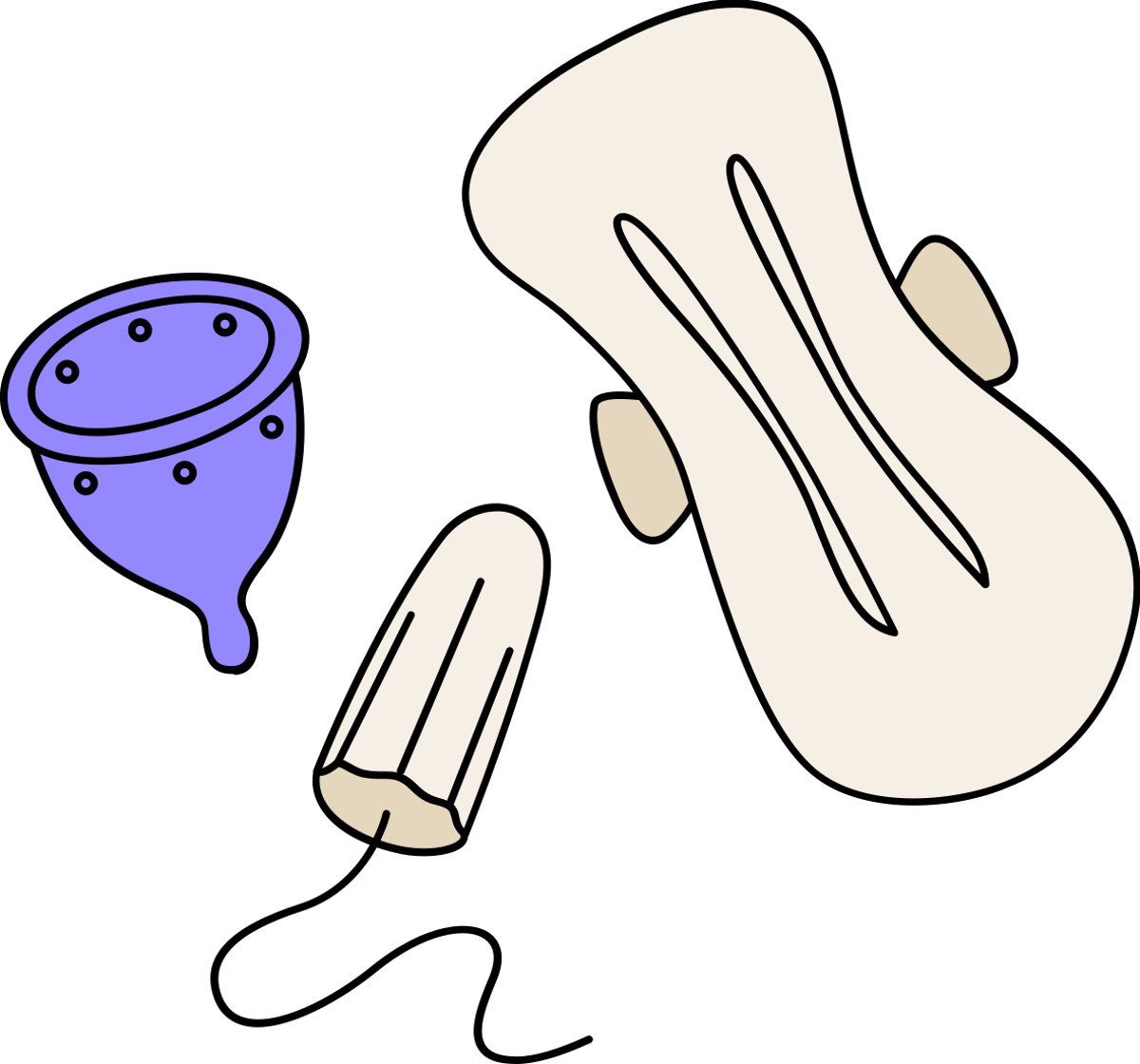Period products
-
Period products help you feel comfortable and dry during your period.
-

-
Popular period products — and their pros and cons:
-
Pads
-
Pads are cotton pads that stick to your underwear and soak up blood. You throw them away after use. Pads come in many different shapes. Pads also come with different levels of absorbency — the more absorbent they are, the more blood they can soak up. You don’t flush used pads down the toilet — it’s best to roll them up in toilet paper and put them in a rubbish bin. Some toilets will have special bins for getting rid of pads.
Cost: Packs of pads can cost $2-$8 — depending on the type, brand, or number of pads in the pack.
Pros: Pads are easy to use. Pads can be purchased at any supermarket or pharmacy. Most dairies and small convenience stores also sell pads.
Cons: Pads are single-use items that you throw away after a few hours’ use.
-
-
Reusable cloth pads
-
Reusable cloth pads can be washed and reused. They are usually made of cotton or bamboo.Reusable cloth pads often have a snap button on the wings that keeps them in place on your underwear. After you use a reusable cloth pad, it’s best to rinse it, soak it overnight, and then wash it.
Cost: A single reusable cloth pad can cost $12-$35. Cost depends on absorbency and brand. Most brands have packs of reusable cloth pads that you can buy — this is often cheaper than buying them one by one.
Pros: Reusable cloth pads are easy to use. They can also be washed and reused. Once you have enough reusable cloth pads, you can re-use them many times — saving you money.
Cons: Reusable cloth pads are more work than disposable pads. You have to rinse, soak, wash, and dry reusable cloth pads each time you use them.
-
-
Tampons
-
Tampons are pieces of cotton with a string at one end. You put them into your vagina to soak up your blood. You pull them out using the string. You should change a tampon every 4-6 hours — or sooner if needed. You can choose from a range of tampon sizes — depending on how heavy your period is.
Cost: Packs of tampons cost $4-$9. Cost depends on type, brand, and number of tampons per pack.
Pros: Tampons are small — they’re easy to pack in your bag or pocket. When you use a tampon correctly, it’s easy to forget you are wearing it — they can be very comfortable and convenient. You can go swimming when you are wearing a tampon.
Cons: There is a small risk of toxic shock syndrome (TSS) when using tampons. TSS is a rare bacterial infection that can cause damage to vital organs. To minimise your risk, always wash your hands before touching or putting in a tampon, use the lowest absorbency to suit your flow, change your tampon at least every 8 hours, and always take your tampon out before you go to sleep.
-
-
Menstrual cups
-
Menstrual cups are soft rubber or silicon cups that you put into your vagina to collect your period. You can empty a menstrual cup every 8-12 hours, rinse it with water, and then put it back in.
Cost: Menstrual cups cost $35-$50.
Pros: If you use them right, menstrual cups should feel comfortable. Menstrual cups shouldn’t leak or spill — you can swim and exercise with a menstrual cup in. Menstrual cups are reusable for several years — saving you money. You can buy menstrual cups from our web shop.
Cons: Learning to put a menstrual cup in can be a bit tricky and messy — but it does get easier. If blood makes you feel bad, menstrual cups might not be the best for you — you do have to empty and wash them after each use.
-
-
Period underwear
-
Period underwear looks and feels like regular underwear — but it’s actually very absorbent. Period underwear can be used instead of pads, or tampons, when you have a light flow — or as a back-up when you have a heavy flow.
Cost: Period underwear costs $25-$45. Cost depends on the brand and type of underwear.
Pros: Period underwear is very convenient and comfortable — they feel just like normal underwear. They can also be washed and reused. You can re-use period underwear many times — saving you money.
Cons: You need to buy several pairs — and the cost can add up. If you have heavy periods, you might need to use a pad or tampon as well as your period underwear.
-
-
Soft tampons
-
Soft tampons are stringless and made from a sponge material.
Cost: $35-$40.
Pros: Soft tampons are stringless, comfortable, and good for heavy bleeding. You can wear a soft tampon swimming. You don’t have to take them out before putting something in your vagina during sex. You can buy soft tampons from our web shop.
Cons: Because soft tampons don't have strings, some people find them difficult to remove.
-
-